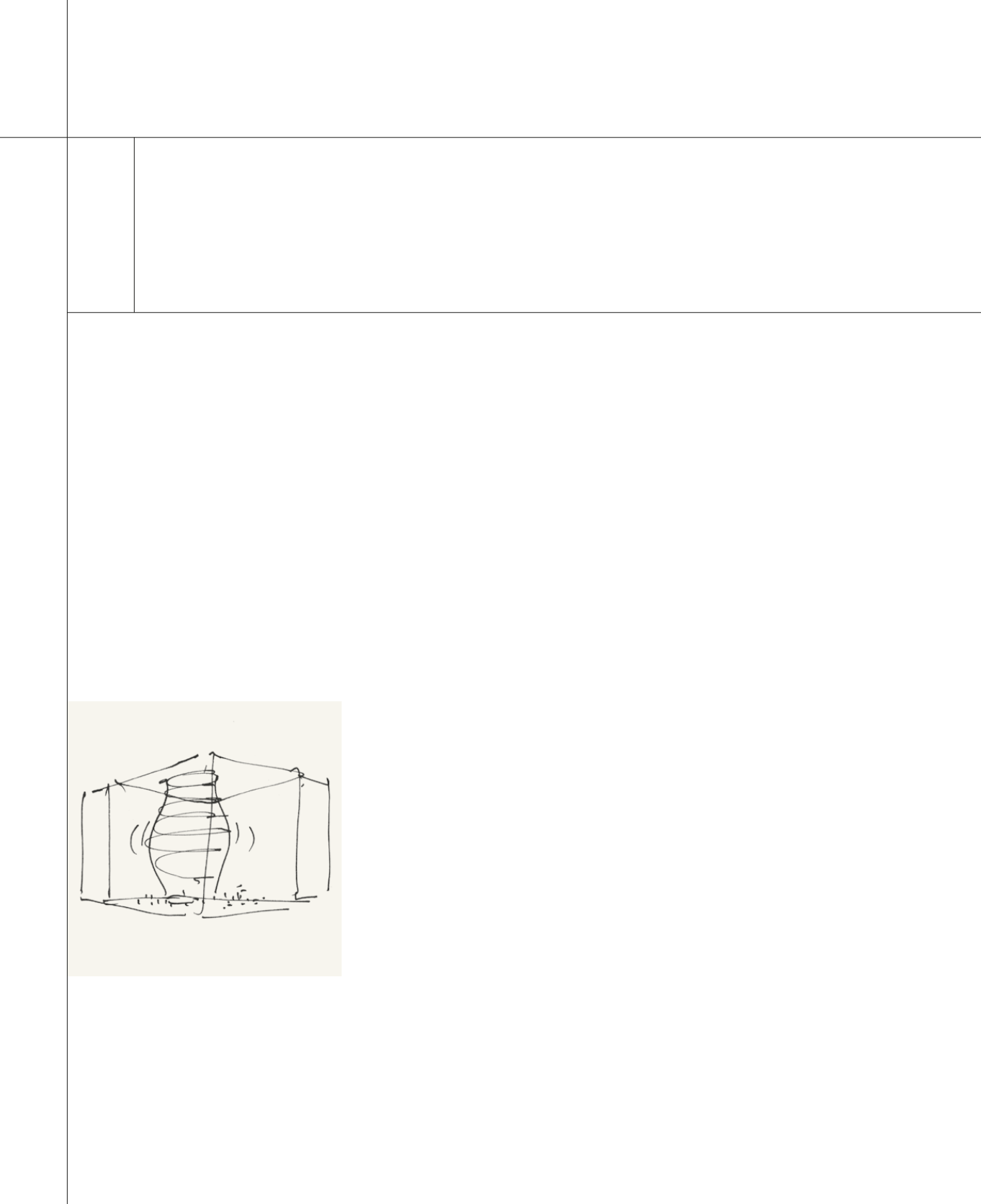
Non si ha idea di quanti oggetti curvi esistano, e solo
[prof.] Mondrian Kilroy, seppur per approssimazione, ne
sapeva stimare l’impatto sulla rete percettiva dell’uomo,
e, in definitiva, sulla sua disposizione etico-sentimentale.
In genere gli riusciva difficile focalizzare la questione (…).
Ma era sua convinzione che la presenza di superfici curve
nell’indice dell’esistente fosse tutt’altro che accidentale,
e anzi rappresentasse in qualche modo la via di fuga
attraverso cui il réale sfuggiva al suo destino di struttura
forte, ortogonalmente organizzata, e fatalmente bloccata.
Era ciò che, in generale, “rimetteva in movimento il
mondo”.
Alessandro Baricco
City
109
EUROPA
4
GLASS ELLIPSES
The heart of the new building represents a structure within a structure, i.e., on
a scale model, a round and oblong loaf of bread placed upright in a square
breadbox; or else, states the architect, a perfume bottle in its box. Once built, its
architecture shows through behind the wood and glass screen of the north (
Rue
de la Loi
) and east (
Justus Lipsius
side) façades, creating a total contrast in plastic
shape and texture compared to the patchwork. Within the atrium, its opalescent
mass overlooks all visitors.
What image to remember? A massive urn set up in the middle of the atrium? But
the urn is ambiguous, i.e., tokens, votes or ashes, its shape symbolises without
untangling them, the images of deliberation, election or relic. Making the image
more diffuse, more luminous and dynamic? Philippe Samyn adopts that of the
lantern. The shape is said to be that of the onion-shaped dome and the light
bulb, of lamp glass, even of the light house and its beacon. The metaphor then
suggests a multitude of associations with the concept of internal protection
(fuse, incandescent filament, luminescent gas), designed to ensure its radiance
outside.
This lantern shape is not arbitrary, it results from the location of the building and
the site’s constraints. The railway tunnel, newly built underground, reduces the
available surface area to anchor the structure on its building site, which, being
very narrow, was the inspiration for a flared shape like a corolla. This basic choice
One has no idea how many curved objects exist, and only [Pro-
fessor] Mondrian Kilroy, even if only approximately, was able to
measure their impact on man’s perception network and, even-
tually, on his moral and emotional mood. It was typically diffi-
cult to focus on the question (…). But he was convinced that the
presence of curved surfaces in the index of what exists was all
but accidental and that on the contrary, it even represented to
some extent, an escape route through which reality eludes its
destiny of a strong structure, laid out at right angles and in-
evitably blocked off. This presence was that which in general,
“made the world go round”.
Alessandro Baricco,
City
GLASS ELLIPSES


